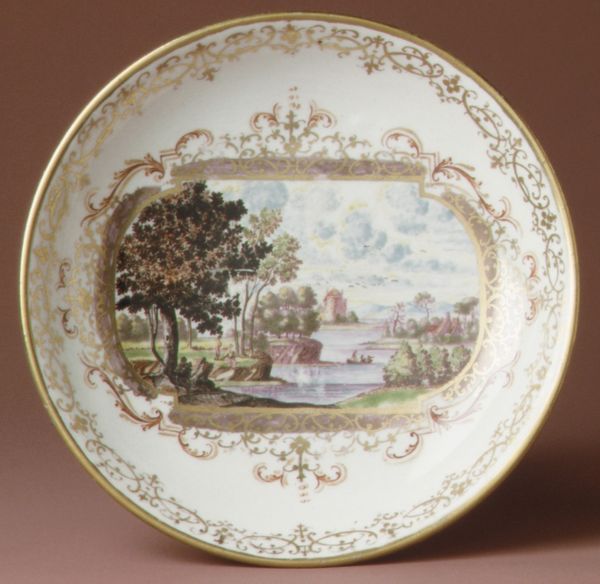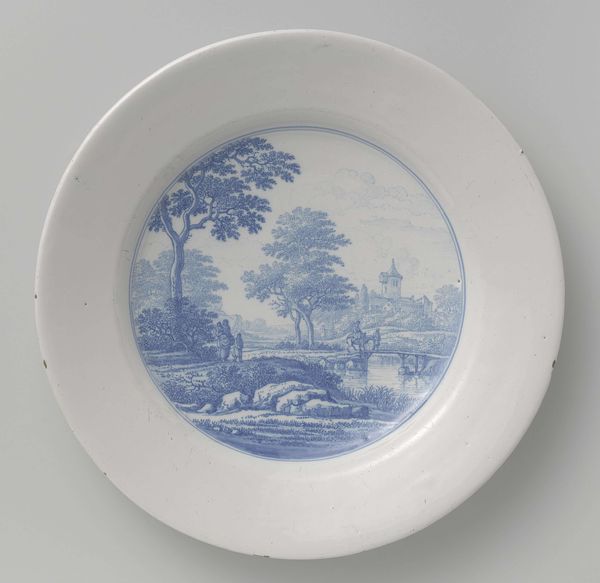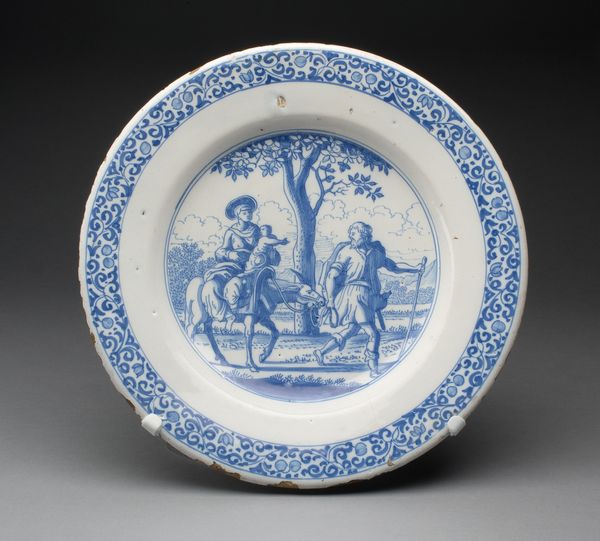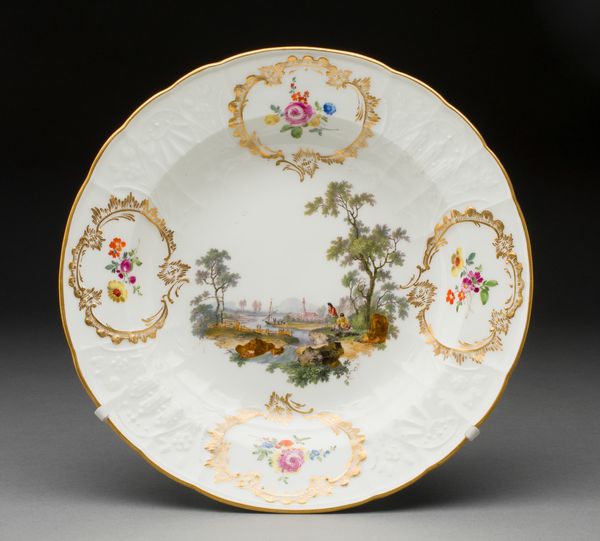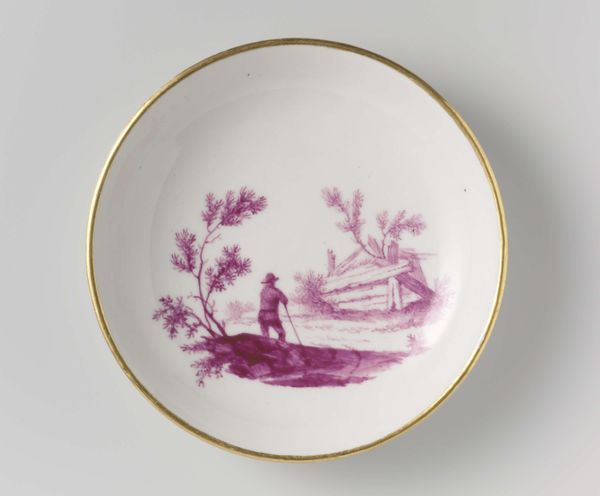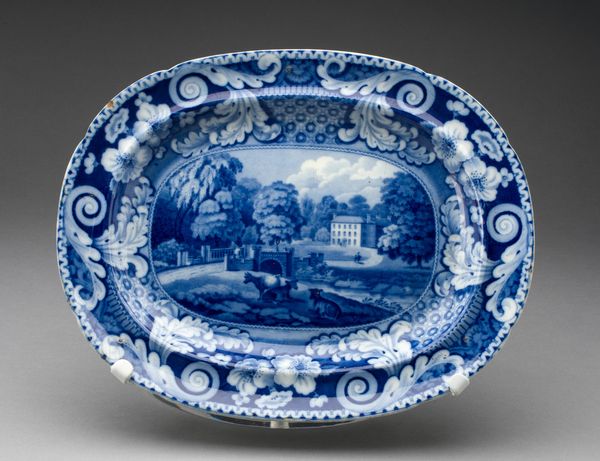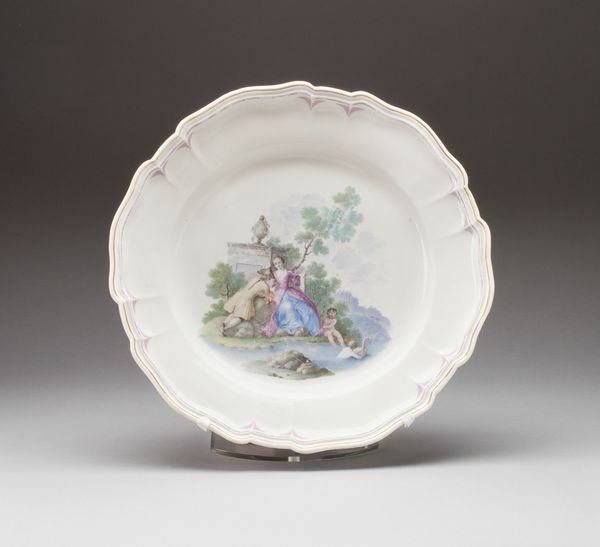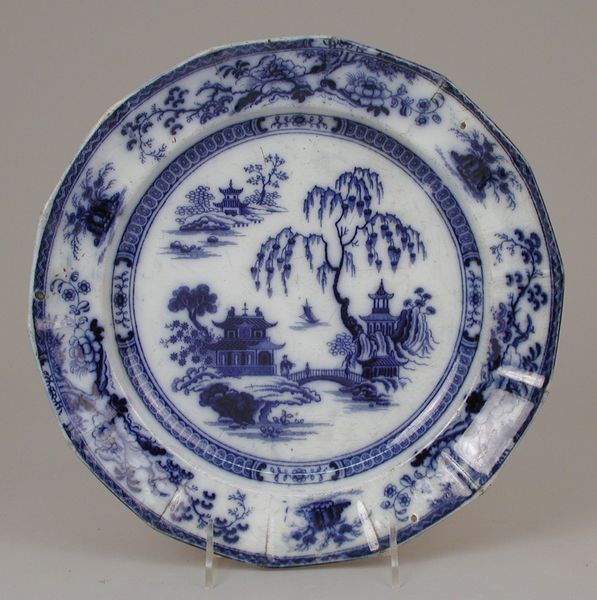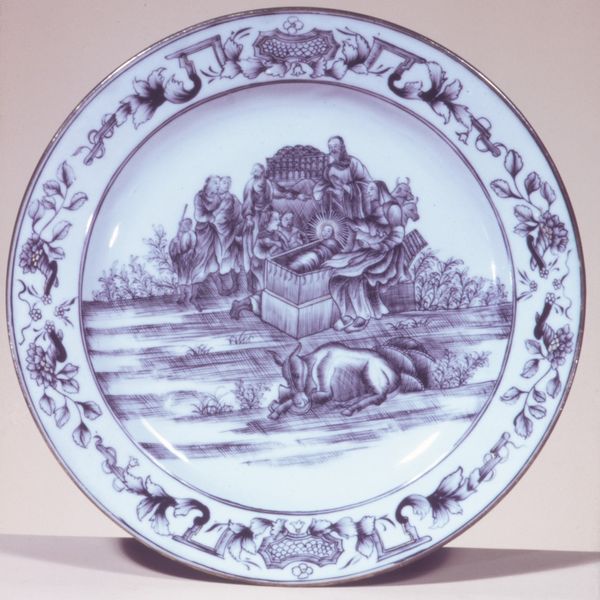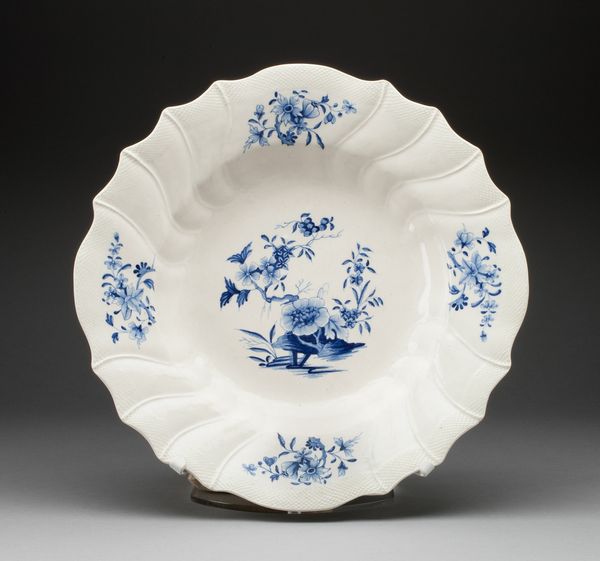
ceramic, porcelain
#
landscape
#
ceramic
#
porcelain
#
ceramic
#
decorative-art
Dimensions: H. 13.7 cm (5 3/8 in.)
Copyright: Public Domain
Editor: So this lovely piece is a porcelain teapot, made around 1785 by the Worcester Royal Porcelain Company. I’m really drawn to the delicate landscape scene painted on its side – it feels like looking at a tiny, idyllic world. What strikes you most about this piece? Curator: What stands out is the socio-political context surrounding porcelain like this in the late 18th century. The British upper and middle classes had a growing appetite for tea, which required porcelain teapots. Consider this teapot not just as a functional object, but also as a marker of social status. Does knowing that alter how you view the scene on the teapot? Editor: That definitely makes me think about it differently. It’s not just a pretty picture; it’s about displaying wealth and taste. So, the landscape scenes – what role did they play in that? Curator: The landscapes often depicted idealized views of the countryside. It promoted an aesthetic that tied wealth and social standing to notions of nature. Ownership of items like this reinforced those power structures, which in turn solidified land ownership within the British gentry and aristocracy. Editor: Wow, I never thought about the connection between landscape art and social structures like that. So, a seemingly harmless teapot tells a larger story about society? Curator: Precisely. This teapot isn’t just a piece of decorative art, it's a lens through which we can examine consumerism, class, and the political power of imagery. Editor: I learned so much. I will never look at a teapot in the same way again. Thank you! Curator: Indeed, recognizing the socio-historical context reframes how we perceive art, making it all the more enriching and valuable.
Comments
No comments
Be the first to comment and join the conversation on the ultimate creative platform.

